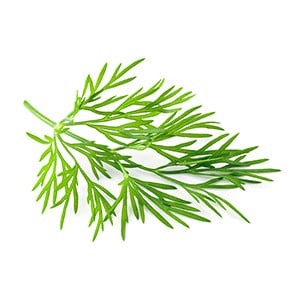Dill

Dill
Anethum graveolens
Plant family
Umbellifers (Apiaceae)
Season Overview
Propagating
Planting
Harvest
J
F
M
A
M
J
J
A
S
O
N
D
Details
Light requirement
Semi-shaded
Water requirement
Wet
Soil
Light (sandy)
Nutrient requirement
Low
Light germinator
Plant distance
15 cm
Row spacing
25 cm
Seeding depth
0.5 cm
Instructions
The season for this plant has not yet begun. The following instructions are for the beginning season.
Beginning of March
Propagating
End of March
Transplanting
End of March
Harden
Description
Dill is an annual, deep-rooting herb of the umbellifer family with various subspecies (garden dill, field dill and Indian dill). Essential oils provide the intense fragrance of the popular medicinal and spice herb.
Origin:
Southeast Asia
Growing tips
Dill seeds can be collected and used for replanting the following year. To do this, you can collect them when they turn brown. Dill is a dark seedling, its perfect germination temperature is 10°C. To harvest, simply pick off the shoot tips during the harvest period. Dill prefers a wind-protected location, as the leaf stalks snap off easily. It is also sensitive to irregular water supply.
Companion Plants
Asparagus
Bean (Broad bean / Faba bean / Field bean)
Bean (Dwarf bean)
Bean (Runner bean)
Beetroot
Borage
Broccoli
Brussels sprouts
Cabbage (Cabbage)
Cabbage (Savoy cabbage)
Carrots
Cauliflower
Chervil
Chili
Chives
Collard greens (Kale)
Collard greens (Tuscan kale / Dinosaur kale / Palm tree kale)
Common marigold
Cucumber / Gherkin
Kohlrabi / German turnip / Turnip cabbage
Lettuce (Lettuce)
Lettuce (Radicchio / Italian chicory)
Marjoram
Napa cabbage / Chinese cabbage
Onion
Onion (Spring onion)
Pak Choi
Parsley
Pea
Pepper / Paprika
Rutabaga / Swedish turnip
Turnip
Antagonistic Plants
Diseases
No diseases
Pests
Root knot nematodes
Nematodes